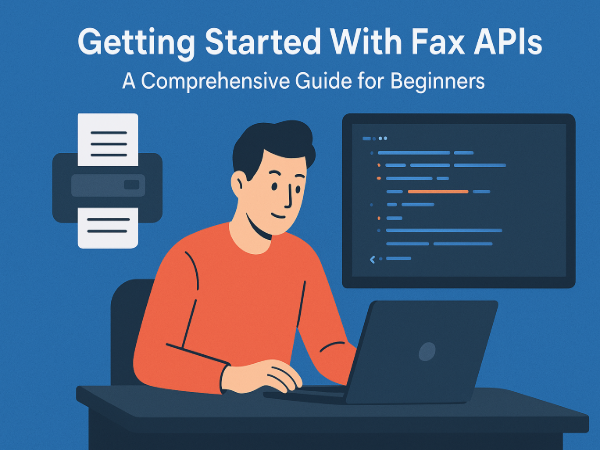Getting Started With Fax APIs: A Comprehensive Guide for Beginners

In a digital age where rapid communication is key, integrating traditional fax capabilities with modern technology platforms can provide a unique advantage. Fax Application Programming Interfaces (APIs) like InterFAX offer a bridge between the tried-and-true facsimile method and contemporary digital workflows. Whether you’re a developer looking to incorporate faxing into your application or a business seeking to automate document transmission, knowing how to use fax API is crucial.
Understanding Fax APIs: What They Are and Why They Matter
Fax APIs represent a layer of abstraction that enables software applications to interact with fax services without the need for manual fax machine operation. These APIs function as a messenger, taking requests from your application and translating them into fax transmissions. They deal with various complexities, such as converting digital documents into faxable formats, tracking the status of fax transmissions, and ensuring the security of the data transferred.
The importance of fax APIs extends beyond mere convenience; they ensure compliance with industry standards where secure document transmission is non-negotiable, such as in healthcare and legal sectors. Moreover, with the advent of cloud fax services, leveraging fax APIs has become increasingly scalable and accessible.
Evaluating Your Needs: Choosing the Right Fax API for Your Project
When considering a fax API for your project, the first step is to assess your specific requirements. Determine the volume of faxes you’ll be handling, the level of integration needed with your existing systems, and any industry-specific compliance issues you must adhere to.
Look for providers that offer robust documentation and active developer support. Equally important is the API’s ease of use and compatibility with your tech stack. You’ll want an API that requires minimal effort to implement but offers extensive functionality to handle diverse tasks.
Security is another significant consideration. Choose a fax API provider that ensures end-to-end encryption and complies with standards like HIPAA (for healthcare) or GDPR (for data protection in Europe). Providers should also be transparent about their audit logs and offer detailed reports on fax activity for accountability and tracing purposes.
Lastly, consider the scalability of the service. Opt for a provider that can handle increased volume without disruptive changes to your setup.
Setting Up Your Environment: Getting Started With Fax API Integration
Once you have selected a fax API, setting up your development environment is the next step. Ensure you have the necessary programming language support and any specific tools or libraries recommended by the API provider. A sandbox or testing environment is also crucial to develop and test your implementation safely without affecting real fax transmissions.
Authentication is a core component of integrating a fax API. Securing access to the API is typically achieved through API keys or OAuth tokens, provided by the fax service. Ensure that your application securely stores and uses these credentials to prevent unauthorized use.
Incorporating a fax API often involves setting up webhooks or callback URLs to handle incoming events, such as the status of a sent fax or the receipt of a new fax. Properly configuring these callbacks is essential to receiving timely updates and maintaining an efficient fax workflow within your app.
Building Your First Fax API Request: A Step-by-Step Tutorial
Begin by constructing the API call with the appropriate endpoint and method. Your request will typically include details such as the recipient’s fax number, the content to be faxed, and any cover page information. Crafting this payload correctly ensures accurate delivery and representation of your fax content.
Next, incorporate the necessary headers in your request, like content type and authorization data. These headers inform the fax server about the type of request and grant it permission to fulfill the API call.
After setting up the request, the next step is sending it via your chosen programming environment. A successful API call will return a confirmation status, which typically includes a unique identifier for the fax transaction. This ID is important for tracking the fax’s progress and dealing with any issues that may arise.
Handling the response from your fax API is pivotal. You should implement logic to interpret the status codes and any accompanying data to confirm that the fax was queued, sent, or if there were any errors.
Altogether, integrating fax functionalities with your applications doesn’t have to be a daunting task. With the right approach and a solid understanding of fax APIs, you’re well on your way to leveraging this powerful tool for dependable and efficient communication.


